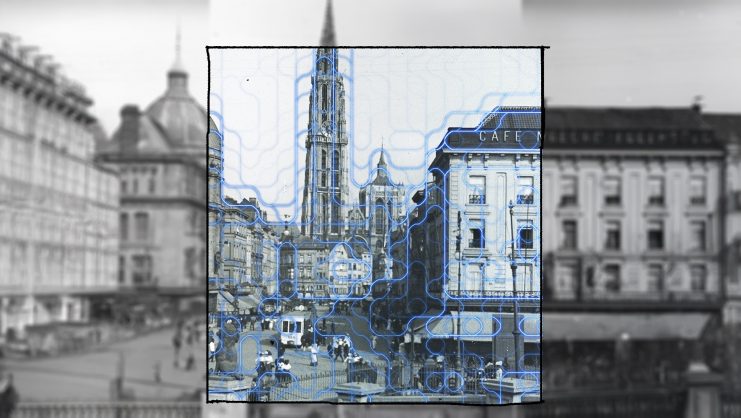Ray Oldenburg gave us a simple idea with lasting power: societies thrive when we have “third places”—spaces beyond home (first place) and work (second place) where we linger, talk, and form the ties that hold communities together. He distilled these hangouts into eight qualities: neutral ground; inclusive “levelers”; conversation-centered; accessible and accommodating; sustained by regulars; low-profile; playful; and “a home away from home.”
These spaces – be they cafés, libraries, or bookstores – are in decline, and research connects the closure of third places to polarization and isolation. A 2021 survey found that Americans were already spending significantly less time with friends before the pandemic rearranged life entirely. Our collective isolation has only metastasized since then: in 2024, a staggering 17% of Americans reported having zero close friends, up from 2.5% in 1990, around when Oldenburg coined the term. Similarly, in Spain 20% of the population reports suffering from loneliness, while 35% of Europeans as a whole report feeling lonely at least some of the time.
In parallel to this decline in traditional third spaces, there has been a broader shift towards experiencing the world through an immersive lens. This has been seen particularly keenly in the creative industries, which account for 6.1% of the global economy and nearly 30 million jobs worldwide. Can this shift to immersive experiences help alleviate the societal issues that have arisen from the decline of third spaces?
Design is key to making this happen. Any medium can be experienced immersively – both physically and mentally – but to create genuine interaction, the audience must be able to react and make changes to the “environment” itself. This interaction is what differentiates experiences that simply provide entertainment from those that strengthen relationships.
If we take a couple of examples put forward as shining lights in immersive experiences and measure them against Oldenburg’s criteria, we quickly see the holes in them as spaces for interaction. Sphere in Las Vegas is a 366-foot-tall media architecture with a wraparound interior screen and a luminous “exosphere” façade that opened with a residency from U2. The teamLab Borderless experience – reborn in 2024 at Tokyo’s Azabudai Hills – lets visitors wander through generative digital artworks that spill across rooms and into each other, dissolving walls between pieces and people.
While immersive, they fail to meet these criteria for third places:
- Neutral ground & inclusivity. Ticket prices and travel can limit who participates; these are not default levelers.
- Conversation as the main activity. The social script is largely spectatorial – talk is secondary.
- Regulars & low profile. They inspire fandom and repeat visits (regulars), but their scale and maintenance put them far from “low profile.”
These experiences produce awe – a powerful social glue, and immediate gratification – but are not optimized for open-ended mingling or everyday conviviality. They lack the interaction of a third space, and point us towards the need for a new, relational paradigm – the Fourth Space – to renew social bonds and counter isolation.
From Third Places to Fourth Spaces
Fourth spaces deliver the third place’s human benefits without being fixed to a single address. Through relational intent, fourth spaces ensure immersion is created in service of relationships, rather than simply swallowing attention and aiming to surprise. Immersion in these spaces brings the possibility of being with each other.
These fourth spaces are not based on technology, and their intent can be successfully achieved in location-based experiences, due to their powerful infrastructures. Indeed, fourth spaces are an evolution of third places. They are immersive environments with two additional characteristics:
- A form of instant gratification: sensory richness, immediate feedback, and micro-rewards—visual cues, haptics, status tokens, real-time performance dashboards—that compress anticipation into the present and keep attention circulating from the moment one enters.
- The ability to turn personal data into knowledge (profiles, inferences, predictions), which can be integrated into some of the immersive experience itself. This means the content itself adapts to pacing, difficulty, social visibilit,y and even sensory ambience on the fly.
The coupling of gratification and personalization intensifies the “pull” of the space while providing continuous measurement, predictive suggestions, and subtle forms of guidance. In other words, success can be monitored using socialization as the main KPI.
Spectacular venues and headset-delivered worlds already command attention, but attention alone does not knit social fabric. The opportunity—and the responsibility—now is to aim immersion at relationships, not just at sensation.
Take the UK’s StoryTrails project. This multifaceted experience reanimated town squares and, crucially, libraries—classic third places—using Augmented Reality walks and archival film to invite residents to rediscover their local history, together. StoryTrails deliberately used public, accessible venues and free programming, drawing families, teens, and older adults into mingled groups.
Another example is Darkfield Radio, which began broadcasting timed, binaural audio dramas to people at home in 2020. The shows, designed to be listened to with the lights off and headphones on, generated a shared, discussable experience with zero geographic barriers – something one could repeat with friends in other cities simultaneously. And research shows that immersive AR games like Pokémon Go, which see users interact with both the environment and other players around them, strengthen a player’s sense of belonging and engagement with their community.
Across these “immersive everywhere” examples, the eight Oldenburg qualities show up strongly, and they also have added features related to two key aspects: instant, low-friction gratification that lowers the threshold to join, and data translated (consentfully) into knowledge that adapts the experience, thus making it personal and relevant and keeping people with each other.
To move from promise to practice, Fourth Spaces need a relationship-centered design brief with the following features:
| Oldenburg’s trait | Immersive fourth space update |
| Neutral ground | Consentful Personalization + Reciprocal Data Value (Let people see, control, and benefit from how their data shapes the experience). |
| Leveler | Algorithmic Leveler (Fairness engineered, not assumed) |
| Conversation is the main activity | Co-Presence Bandwidth (Multimodal and graded ways of being with others—from glance to deep collaboration—without overload) |
| Accessibility & accommodation | Latency as Hospitality (Make the first seconds welcoming and responsive without manipulative loops) |
| Regulars | Reputation with Privacy (Let regulars achieve trust through pseudonyms, portable only by choice) |
| Low profile | Safety & Repair by design (Build boundaries, rapid response, and restorative pathways into the interaction layer) |
| Playful mood | Instant Delight with Guardrails (Joy with latency & safety) |
| Home away from home | Continuity Across Contexts (interoperable across devices, venues, sites, sustainable) |
If third places were the social infrastructure of the twentieth century, fourth spaces can be the programmable social layer of the twenty-first. Cultural institutions, city makers, immersive experience designers, architects, sociologists, and technologists can coauthor this layer by embedding meetups around spectacle, by choosing public, accessible hosts (libraries, schools, plazas), and by funding stewards as seriously as screens.
The question is no longer whether immersion will shape how we gather; it already does. The question is whether we will shape it to help us belong. If third places taught us to linger and socialize, the immersive experiences that are true fourth spaces can offer us the possibility of belonging—and to keep coming back, together. In the words of John Hanke (founder of Niantic, the developer of Pokémon GO): “Stand up, walk outside, and connect with people and the world around us.”
© IE Insights.











